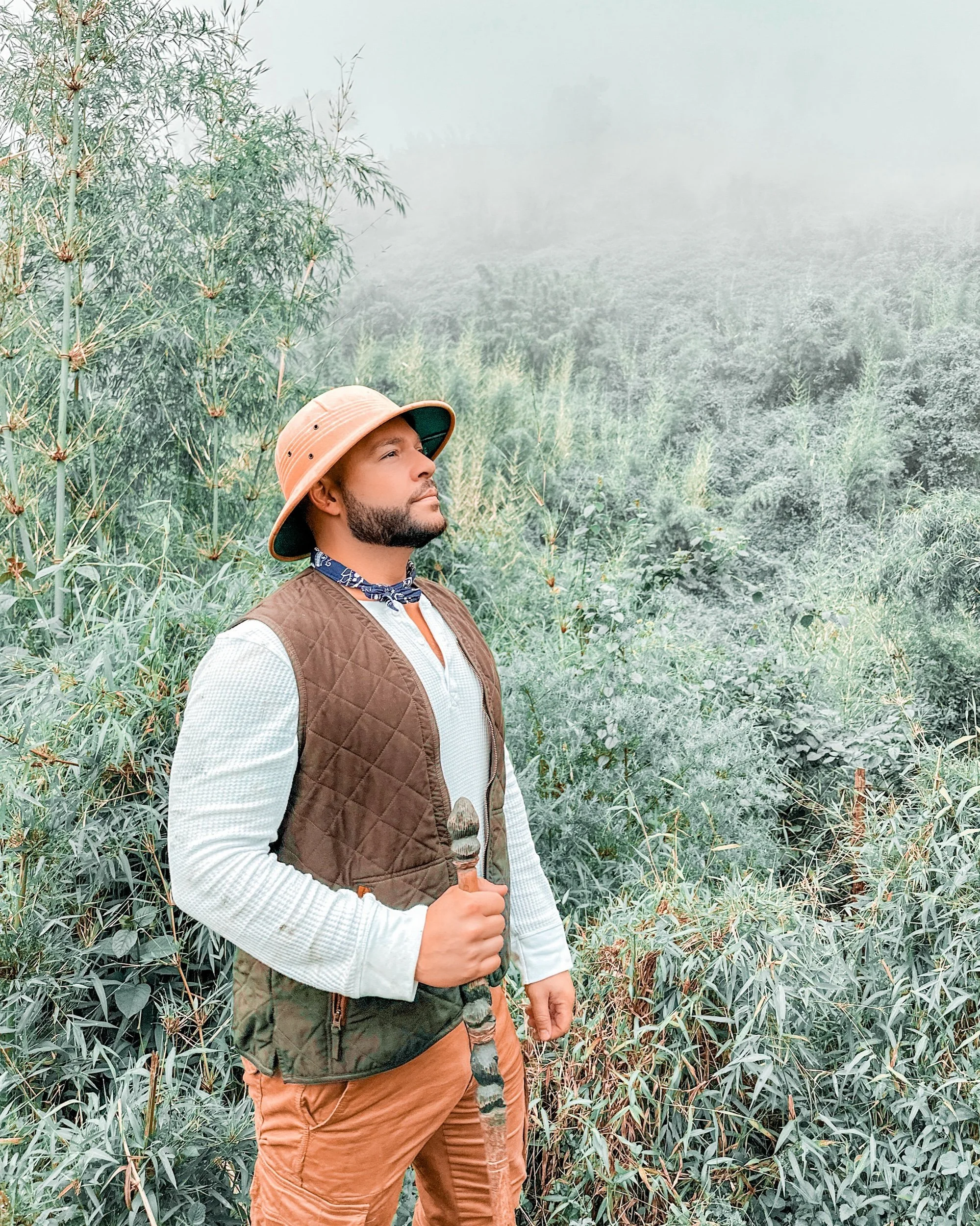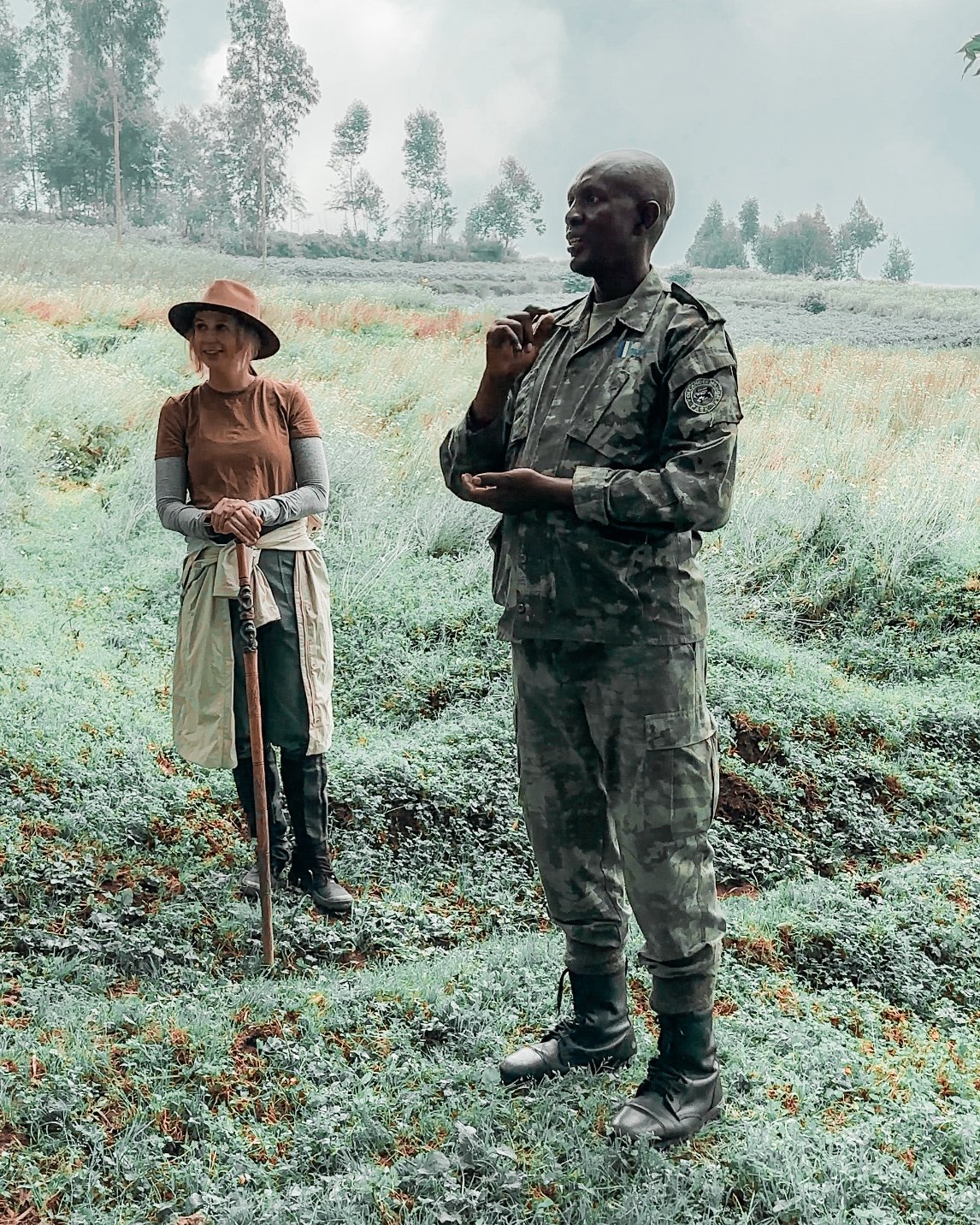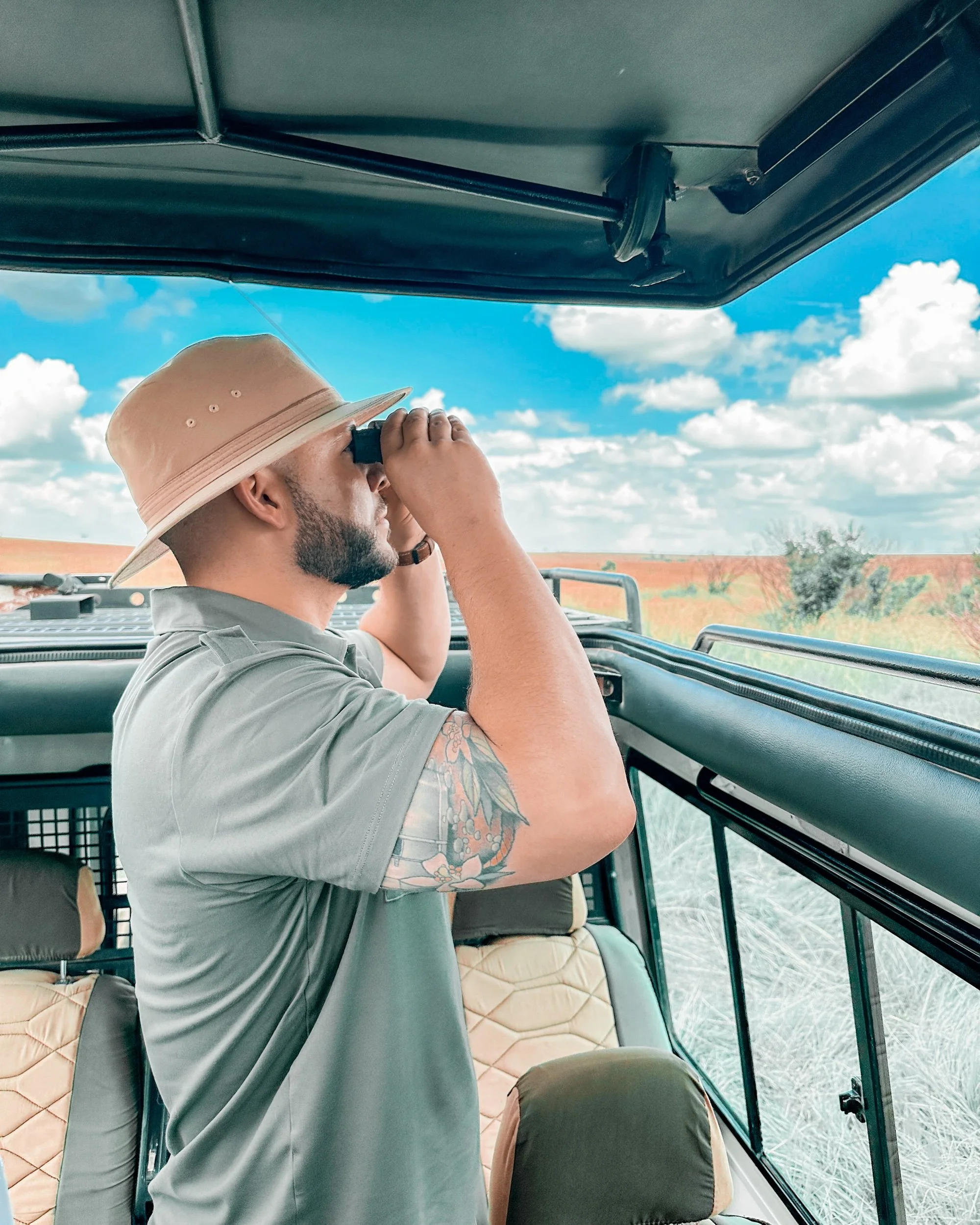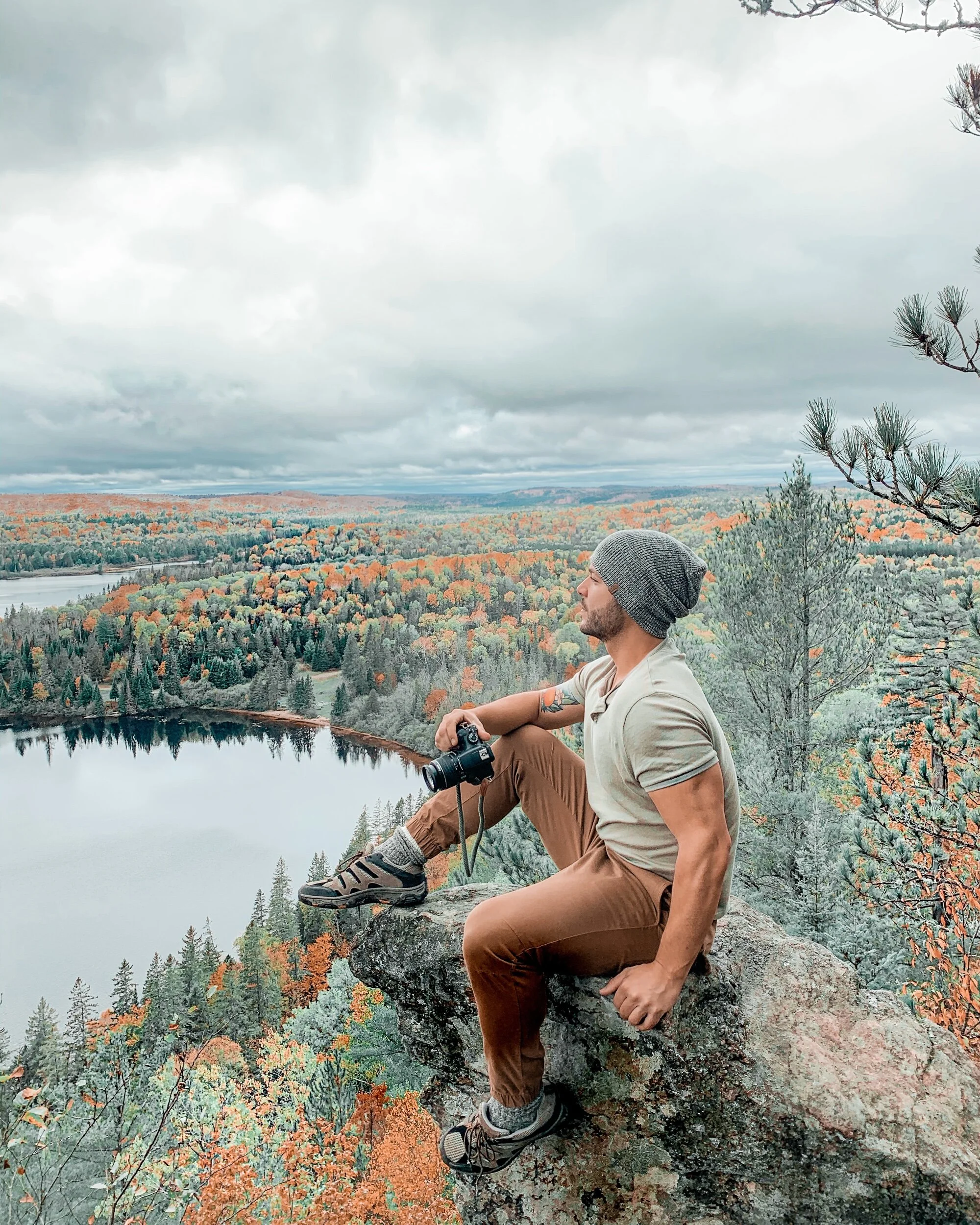Lost in Rwanda: The Ultimate Guide to Gorilla Trekking
As an avid traveler with a deep-seated fascination for all things nature, my yearning to witness the enigmatic mountain gorillas was sparked in the early '90s at the tender age of 11. I fondly remember the cover of National Geographic, an image that stirred my imagination and planted the seed for an unforgettable adventure that I never knew was possible at the time. The front cover was of a mountain gorilla. Its eyes pierced through me, conveying a level of depth, emotion and a quiet strength that awoke a sense of wonder in me. My father's subscription to National Geographic brought the captivating realm of mountain gorillas, cheetahs and all of the African animals right into our home, igniting my imagination and a lifelong dream of encountering these precious animals in their natural habitat. Come get lost with me as I fulfill this childhood dream and delve into the world of gorilla trekking.
Choosing between Rwanda, Uganda and Democratic Republic of Congo
Picking the ultimate mountain gorilla trekking destination can be daunting. Rwanda, Uganda, and the Democratic Republic of Congo present thrilling yet different experiences. Rwanda's organized treks and serene landscapes hold undeniable allure but come at the priciest of three options at $1500 USD per person. With that being said, it requires much less travel time from the capital city of Kigali (only 2.5 hours) in comparison to Uganda which is between 7-9 hours by car. It’s also the place where Dian Fossey conducted her groundbreaking research. Uganda offers diverse habitats and a more budget-friendly option ($700 USD per person), promising a great experience. Then there's the Democratic Republic of Congo ($400 USD per person), boasting raw beauty but off-the-beaten-path challenges. Considering these involves more than convenience and cost; it's about location/difficulty getting there, number of habituated gorilla families, accommodation and as I soon learned - political stances. Initially leaning towards Uganda due to a lower price point, I reconsidered when learning about Uganda's repressive anti LGBTQ laws (including the death penalty!!!). In light of this, I chose Rwanda. Although I can’t blame the Ugandan gorillas for humanity’s barbarism, I can’t support tourism in a country in which I’m not welcomed.
How to choose a reputable tour company?
After a lot of research, I chose Gorilla and Wildlife Safaris. I was very happy with the overall experiences as well as the communication and organization and can’t recommend them enough. When embarking on a gorilla trek or safari, selecting a reputable tour company can make all the difference in your experience. First and foremost, prioritize companies with strong reputations, verified reviews, and certifications from local tourism boards. I always like to search companies on YouTube, Instagram and TikTok to watch others’ experiences. Consider their expertise in the region—look for those with extensive knowledge of East Africa's diverse wildlife, cultural heritage, and conservation efforts. Assess their commitment to sustainable practices, ensuring they prioritize wildlife preservation and support local communities. Transparency in pricing, itinerary details, and safety measures is crucial. Don't hesitate to inquire about their guides' expertise, language proficiency, and emergency protocols. Ultimately, choose a company that aligns with your values and prioritizes both your enjoyment and the well-being of East Africa's natural wonders.
When to visit
Deciding when to visit East Africa hinges on the experience you desire. If gorilla trekking in Uganda or Rwanda is on your agenda, the dry seasons from June to September and December to February offer optimal trekking conditions. Each season offers unique experiences, so choose your timing based on the adventures you seek, whether it's tracking gorillas, witnessing migrations, or immersing yourself in the region's rich biodiversity. Note that with global warming, weather is a bit more unpredictable. For example, when we visited in January, it was meant to be the dry season, but we had quite a bit of rain and several tour companies mentioned the weather was unusual for this time of year and likely a result to global warming.
Obtaining visas and permits
Navigating visas and permits for an East African adventure is key to a smooth trip. Most countries in the region require visas, obtainable either online or upon arrival, though regulations vary. We applied for an East Africa Tourist Visa as we were visiting Rwanda and Kenya. Research and plan in advance to ensure you have the necessary documentation. For gorilla trekking or specific national parks, permits are crucial and often limited; securing them ahead of time is essential. These permits can sell out quickly, so booking months in advance is wise. Additionally, be mindful of any specific entry requirements, such as yellow fever vaccinations, and carry copies of important documents like passports and permits during your travels. Prioritize thorough preparation to avoid any hiccups and ensure an uninterrupted exploration of East Africa's wonders.
Required vaccines and where to get them
Before embarking on your East African adventure, ensuring you have the necessary vaccines is paramount. Commonly recommended vaccinations for this region include yellow fever, typhoid, hepatitis A, and routine immunizations like measles-mumps-rubella (MMR), tetanus-diphtheria-pertussis, and influenza. Visiting a travel health clinic or your healthcare provider in your town/ciry is advisable to discuss specific immunization needs based on your itinerary and medical history. In Toronto, numerous clinics such as Toronto Travel Vaccine Clinic (which is where I had my consultation and shots), offers comprehensive travel health services, including consultations, vaccines, and health advice tailored to East African travel requirements. Prioritize your health and well-being by scheduling an appointment well in advance of your trip to ensure adequate immunization coverage.
Tips to maximize your experience
When preparing for an East African journey, a few tips and tricks can elevate your experience. First, pack smartly, considering weather variations and the specific activities planned, such as safari gear or hiking essentials for gorilla trekking (more on this in the following point). Embrace the local culture by learning a few basic phrases in Swahili—it's appreciated and fosters connections. Words like ‘jambo’ which mean ‘hello’ are helpful when greeting others. Stay hydrated and use sunscreen due to the region's often intense sun. Keep an open mind and respect local customs, traditions, and wildlife; it enriches your experience and shows appreciation for the communities and nature you encounter. Additionally, carry some cash in local currency for small purchases and tipping. Tipping etiquette is important. Ask your local tour guide what they suggest is reasonable. I highly recommend taking money out in the local currency at the airport ATMs before embarking on your journey. Finally, be flexible as plans might change due to wildlife movements or weather conditions—embracing spontaneity often leads to unexpected, delightful discoveries in this breathtaking part of the world.
What to wear
When gearing up for a gorilla trekking experience in East Africa, your clothing choices become pivotal. Opt for comfortable, moisture-wicking clothing in earthy tones, helping you blend into the forest environment while ensuring ease of movement through rugged terrain. Long-sleeved shirts and pants protect against scratches, insect bites, and the elements. This is super important. Keep in mind that in most cases, you’re going off the beaten path (quite literally) meaning your gorilla guides are using machetes to cut through the thick forest. Sturdy, waterproof hiking boots with good traction are a must for navigating the sometimes slippery paths. I fell a handful of times and given it’s a rainforest, the mud can get quite slippery. Bring a lightweight waterproof jacket for potential rain showers and pack a hat, sunglasses, and gloves for added protection. Gloves were something I thought wasn’t necessary and I regretted not bringing them. I can’t tell you how many times my hands scraped against prickly and thorny plants. As you prepare, remember that dressing appropriately not only ensures comfort during the trek but also respects the gorillas' natural habitat and local customs.
The experience
Gorilla trekking in Rwanda promises an unforgettable adventure, offering a rare and intimate encounter with these majestic creatures. The experience begins with a briefing, where guides share insights into gorilla behaviour, safety guidelines, and expectations for the trek. As you embark on the hike through the lush and captivating Volcanoes National Park, the anticipation builds. The trek's duration varies, ranging from a couple of hours to a full day, depending on the gorillas' location and your group’s fitness levels. Once you locate the gorilla family, the encounter is magical—observing their social interactions, nurturing behaviours, and sheer presence is awe-inspiring. You'll have a precious hour to observe and photograph these incredible primates in their natural habitat, creating lifelong memories. Although you’re meant to keep a respectful distance, given these are wild animals, it’s not uncommon for them to come right up to you. A mother and a baby walked right in front of me and tapped me on the knee which was unreal! The overall experience is profound, a unique communion with nature that leaves visitors moved by the beauty and vulnerability of these magnificent creatures and their habitat.
















